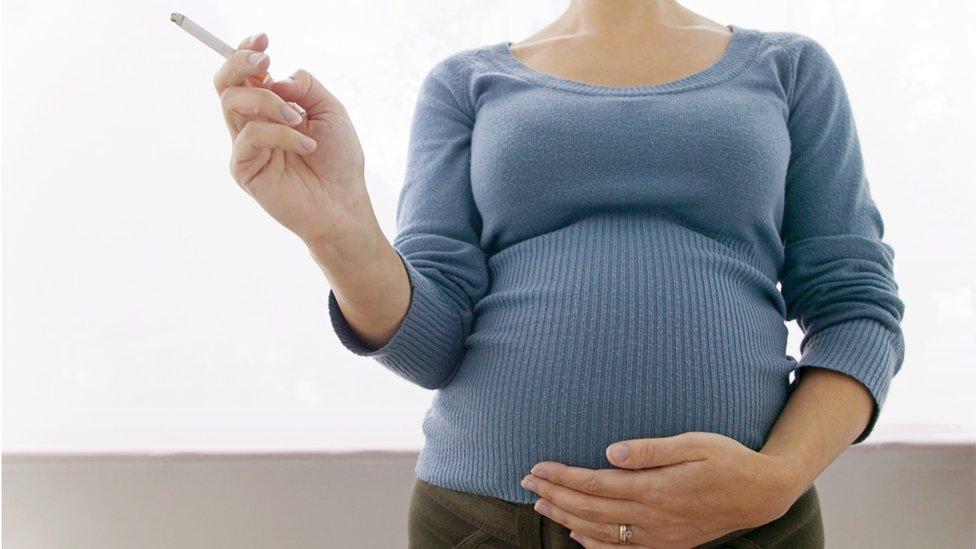Study links tobacco availability to smoking in pregnancy
- Published

Pregnant women are more likely to smoke if they live in areas with lots of shops selling cigarettes, a study has suggested.
Edinburgh University researchers looked at maternity records in tandem with information on all Scottish tobacco outlets.
They said their study is the first to reveal the links between tobacco availability and smoking in pregnancy.
Previous research suggested tobacco was more available in deprived areas.
The research team said "restricting the supply of tobacco could help tackle health inequalities".
The study found pregnant women living in Scottish neighbourhoods with the highest availability of tobacco products were 70% more likely to smoke than those living in areas where no tobacco was sold.
Dr Tom Clemens, of Edinburgh University's school of geosciences, who led the study, said: "Smoking during pregnancy is a critically important public health issue with lasting impacts for both mother and child.
"This study provides the strongest evidence to date of the need to tackle the supply of tobacco in order to reduce the prevalence of smoking."
'Healthy choices'
According to the researchers, limiting the supply of tobacco could help to cut rates of smoking among pregnant women, 15% of whom smoke, and throughout the wider population in Scotland.
The Scottish government has set a target of reducing smoking rates in the adult population to below 5% by 2034. The current rate of 21% has not fallen since 2013, according to the university.
Sheila Duffy, chief executive of ASH Scotland, said: "The environments people grow up in often influence their options for making healthy choices.
"In some communities, the harms caused by heavy smoking go hand-in-hand with tobacco being sold in most shops.
"Retailers need support to diversify away from selling a lethal, addictive product that Scotland is committed to putting out of sight, out of mind and completely out of fashion."
The team examined maternity records - which include details of expectant mothers' smoking behaviour - for the more than 700,000 births in Scotland between 2000 and 2015. They focused on women who had at least two babies during the period and moved neighbourhood between pregnancies.
The data was analysed alongside information on all the tobacco outlets in Scotland.
The study, published in the journal Tobacco Control, was funded by the Medical Research Council and the Natural Environment Research Council.